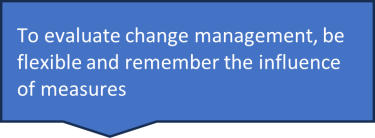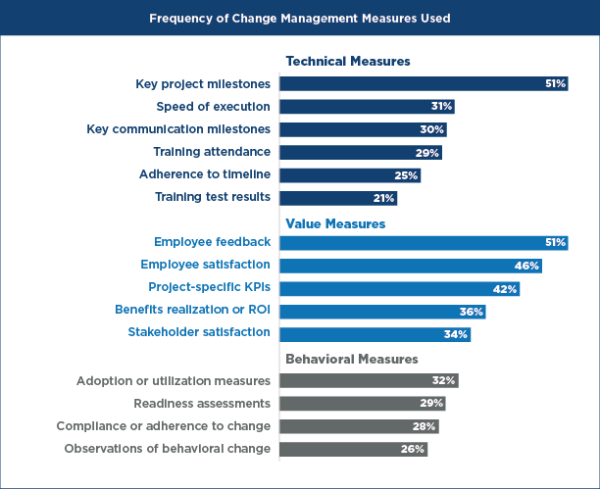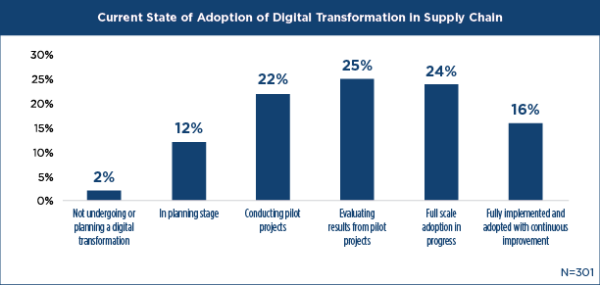
In the post-pandemic world, one constant in supply chain has become change. As a result, organizations are investing more time and resources to undertake change management projects within and across supply chain functions.
With so many rapid, moving parts, how do organizations decide if a change has been successful, and how do they evaluate the success of these change initiatives?
Picking Measures to Assess Change Initiatives
Picking the right measures is critical in assessing whether or not change initiatives support business and supply chain goals.
Ideally, these considerations should be taken when selecting measures:
- Organizations should agree upfront on a well-balanced set of measures that yield actionable insights into performance.
- Selected measures should help identify current challenges and opportunities.
- Measures should align with the organization’s culture and strategic goals.
- Organizations should seek to use a mix of technical measures, value measures, and behavioral measurers .
Once strategic measures are identified, how an organization implements them will vary depending on organizational needs. Many organizations take a phased approach that focuses on adoption measures earlier in the rollout, then shifts to success or impact measures toward the end of implementation.
APQC research finds that the top two measures used are key project milestones and employee feedback (Figure 1).
Figure 1
Digital Transformation is the #1 Change
Of all the transformations supply chain organizations have undergone, digital transformation leads the charge. From conducting pilot projects, evaluating a pilot project, or undergoing full scale adoption, APQC research shows that 71 percent of organizations surveyed are embarking on a digital transformation (Figure 2).
Figure 2
To learn more about the top 10 components of digital transformation in supply chain, please visit Evaluating the Success of Changes in Supply Chain
Perception is Reality in Change Management
Selecting the right measures for any initiative can be a struggle for organizations, and picking measures for change management in supply chain is no different.
Leaders should recognize that the measures adopted will drive employee behavior, sometimes in unintended ways. Setting measures communicates throughout the organization that certain actions and targets are most important, thus guiding employees toward behaviors that ideally both further the change and achieve goals.
The types of measures an organization selects can influence how effective a change initiative is perceived to be.
In APQC’s research, organizations that used the following measures achieved higher rates of perceived effectiveness for their change than those that didn’t:
- key communication milestones,
- speed of change execution,
- adoption or utilization measures, and
- stakeholder satisfaction.
Take Action
Selecting the right measures to track change is an ongoing challenge for many supply chain organizations. But APQC research finds that leading organizations have found effective ways to measure and track change both quantitatively and qualitatively:
- agree upfront on measures of success,
- take a phased approach that draws in different measures at different stages of change,
- remain aware of how measures drive behaviors,
- leverage qualitative observations to track the emergence of new values and behaviors, and
- remain flexible.
These strategies and approaches help organizations assess the progress of change, drive buy-in, and pinpoint areas of resistance or change fatigue more effectively.
Get quick guidance on how to measure change management success in supply chain.
To continue the conversation, follow Marisa on X at @MB_APQC or connect with her on LinkedIn.


